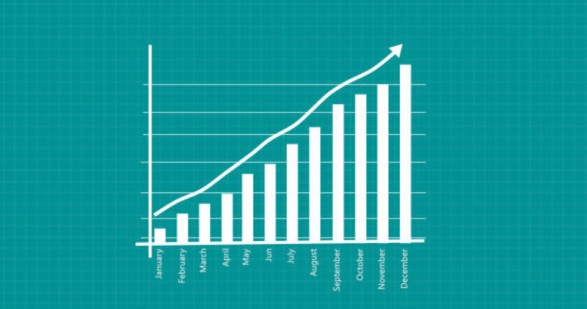The Laffer Curve, a fundamental concept in the realm of economics, offers insightful perspectives into the relationship between tax rates and tax revenue. Its unique 'bell-curve' representation symbolizes the counter-intuitive notion that increasing tax rates beyond a certain point can actually lead to a decrease in collected revenue. This concept has served as a pivotal basis for numerous economic strategies and fiscal policies around the globe. Understanding the Laffer Curve is therefore essential for deciphering the complexities of macroeconomic planning and strategizing.
Overview of the Laffer Curve

The Laffer Curve, named after its originator American economist Arthur Laffer, is a graphical representation of the relationship between tax rates and tax revenue. The curve illustrates the idea that as tax rates increase, there comes a point where collecting more taxes becomes counterproductive in terms of generating government revenue. This 'tipping point' on the curve is known as the 'revenue-maximizing tax rate'.
Significance of Laffer Curve in shaping fiscal policy
The Laffer Curve has significant implications for shaping economic strategies and fiscal policies. It challenges the traditional belief that higher tax rates always lead to increased government revenue, and instead emphasizes the importance of finding an optimal tax rate. This concept is especially relevant in today's global economy, where governments are constantly looking for ways to maximize revenue while minimizing negative effects on economic growth.
The Concept of the Laffer Curve
The basic premise of the Laffer Curve is that tax rates and tax revenue are not directly proportional to each other. In fact, as tax rates increase beyond a certain point, taxpayers tend to engage in more tax avoidance behaviors, resulting in a decrease in overall revenue collected by the government. On the other hand, lowering taxes can potentially lead to increased economic growth and ultimately generate higher tax revenue.
The Laffer Curve is not a fixed concept, and the location of the 'revenue-maximizing tax rate' can vary depending on various factors such as the type of economy, government spending, and taxpayer behavior. This highlights that there is no one-size-fits-all approach when it comes to taxation and that governments must carefully consider their unique economic circumstances.
Application of the Laffer Curve in economic strategies
The Laffer Curve has been a crucial factor in shaping economic strategies around the world. One notable example is the supply-side economics movement, which advocates for lower tax rates and reduced government spending to stimulate economic growth. This strategy relies heavily on the belief that lower taxes will incentivize taxpayers to work harder and invest more, leading to an increase in overall economic activity and ultimately generating more tax revenue.
The role of the Laffer Curve in fiscal policy decision-making
The Laffer Curve has been a subject of intense debate in the realm of fiscal policy. Critics argue that it oversimplifies the complex relationship between tax rates and revenue and can lead to harmful policies if not applied carefully. However, proponents argue that it offers valuable insights into tax policy and should be taken into consideration alongside other economic factors when making fiscal decisions.
What Is Tax Elasticity in the Context of the Laffer Curve?

Tax elasticity, also known as tax responsiveness, is a crucial concept in understanding the Laffer Curve. It refers to the degree to which changes in tax rates affect changes in tax revenue. A high level of tax elasticity means that small changes in tax rates can result in significant changes in tax revenue, and vice versa.
The Laffer Curve demonstrates that there is an inverse relationship between tax elasticity and the 'revenue-maximizing tax rate'. As tax rates increase, taxpayers become more elastic, and changes in behavior such as increased tax avoidance can lead to a decrease in overall revenue. Therefore, understanding the level of tax elasticity is critical in determining an optimal tax rate that maximizes government revenue.
Controversies surrounding the Laffer Curve
The Laffer Curve has been a subject of controversy ever since its introduction in the 1970s. Some critics argue that it oversimplifies the complex relationship between tax rates and revenue, while others claim that it is used as a justification for tax cuts for the wealthy.
One major criticism is that the Laffer Curve assumes a linear relationship between tax rates and revenue, which may not hold true in reality. It also does not take into consideration the impact of tax policy on income distribution and can potentially worsen income inequality.
Current uses of the Laffer Curve in fiscal strategies
Despite its controversies, the Laffer Curve continues to be an important concept in shaping fiscal policies. Many governments use it as a framework for evaluating and designing tax policies, while others criticize its oversimplification of the complex economic landscape.
The Impact of Digital Economy on the Laffer Curve
The rise of the digital economy has posed new challenges for governments in terms of taxation. With online transactions and international trade becoming increasingly prevalent, tax authorities must consider the impact on tax elasticity when applying the Laffer Curve to their fiscal strategies.
Projections for future usage of the Laffer Curve
As long as taxation remains a crucial aspect of economic management, the Laffer Curve will continue to play a role in shaping fiscal strategies. As economies and tax systems evolve, it is likely that the concept will also adapt and develop further, incorporating new variables and techniques for optimizing government revenue.
Conclusion
The Laffer Curve offers valuable insights into the complex relationship between tax rates and government revenue. While its applicability is still a subject of debate, it remains a crucial concept in shaping economic strategies and fiscal policies worldwide. As economies continue to evolve, governments must carefully consider their unique circumstances when applying the Laffer Curve to ensure optimal decision-making for generating government revenue. So, we can conclude that the Laffer Curve will continue to be a relevant and influential concept in economics for years to come.




